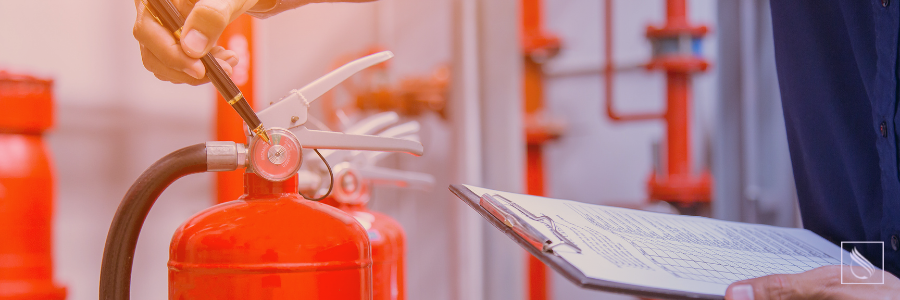Fire is a very real and present danger. In 2019, local fire departments in the United States responded to 1,291,500 fires. These fires caused an estimated 3,700 civilian deaths, 16,600 civilian injuries, and an estimated $14.8 billion in property damage. Every 24 seconds a fire department in the United States responds to a fire. Structure fires occur at the rate of one every 65 seconds, and a home fire occurs every 93 seconds. (1)
Additionally, according to the statistics and facts from the Insurance Information Institute, 90 percent of wildland fires in the U.S. are caused by humans. These human-caused fires result from campfires, burning of debris, downed power lines, and intentional acts of arson. The remaining 10 percent are caused by lava or lightning. Canada accounts for roughly 8,000 wildfires each year. These fires greatly affect communities and infrastructures and claim human lives. (2)Causes of Fire
Fires can be categorized as either accidental, negligent, or intentional. The causes of fires vary greatly and include:- Kitchen equipment - fires caused in the kitchen while cooking
- Combustible materials and flammable liquid storage - especially those stored in high risk areas, such as boiler rooms or near furnaces, etc.
- Electrical - aging electrical systems or faulty wiring, including exposed electrical wires
- Lightning - an act of nature
- Arson - fires intentionally set
- Wildfires - fires caused by humans or an act of nature (lightning, volcanoes, etc.)
As churches, schools, and camps reopen, revisit your fire safety preparedness at your church and/or school. Preparedness involves thinking ahead, reviewing applicable fire safety codes and standards, and putting a plan in place so you can keep everyone safe and minimize the risk of loss.
The 3 P’s of Preparedness (Prevent, Plan, and Practice)
Prevent- Regularly check and test your smoke alarms, carbon monoxide detectors, and fire alarms or manual pull stations. Replace batteries as needed, and service annually.
- Regularly check your fire extinguishers and sprinkler systems. Make sure they are functioning properly, and service annually.
- Keep kitchens in good condition by regularly checking the stoves/burners and the kitchen hood vents (clear/clean grease and debris).
- Combustible materials and flammable liquids should not be stored near the furnace or in boiler rooms, etc. They should have their own storage space, especially alcohol-based hand sanitizers and cleaning products, as they pose a high safety concern.
- Exposed electrical junction boxes/outlets should be covered with UL Listed plates to prevent electrical shock and potential fire, as per NFPA 70®.
- Arson fires (intentionally set) are another leading cause in fire loss. Keep your building doors closed whenever unoccupied and add surveillance systems, if possible. Clear your property of materials that could be used by an arsonist, such as wood, cardboard boxes, etc.
- Campfires are a contributing factor to wildfires. Follow these safety tips when building a campfire:
- Select a flat, open area away from flammable materials.
- Remove grass, leaves, and twigs down to the soil.
- If possible, use a commercial fire ring or build your own out of rocks.
- Cut wood in short lengths so it does not spread out of your fire ring.
- Never leave your fire unattended.
- Extinguish your fire completely.
Benjamin Franklin is quoted as saying, “If you fail to plan, you are planning to fail.” This is just as true with fire prevention as with anything else.
- Have an actionable plan for evacuating your building in case of fire. Post your emergency evacuation diagram and other information in visible locations throughout your building.
- Egress management: Have protocols in place that allow occupants to use all exits during an emergency.
- Occupant flow: If one-way aisles or hallways are in use for social distancing, place appropriate signage to establish the desired flow. Remember, fixed signage should not obstruct or block means of egress.
- Seating arrangement: If a seating area is rearranged, it is important that the reconfiguration of the seats and tables does not obstruct or block needed exits paths or manual alarm pull stations.
- Partition placement: If using partitions, verify that they meet the flame-spread index and smoke ratings specified by the interior finish provision of the NFPA® 101: Life Safety Code®.
- Safety officers and maintenance personnel should regularly inspect buildings for anything unusual.
- Strategically place fire extinguishers throughout the buildings.
- Train safety officers or designated personnel to properly operate portable fire extinguishers.
- Plainly mark all exit doorways with sufficiently illuminated exit signs.
- Clear all obstructions from pathways/hallways that lead to exits.
- Establish a meeting location away from the building.
- It is important to communicate your escape plan to everyone.
Now that you have your emergency plan in place, it is important to communicate it to your members or students. You should also regularly practice your plan.
- Regularly run fire drills with your members or students.
- Use these drills to follow your escape plan and review what worked and what didn’t.
- Make sure everyone knows what the fire alarm sounds like and what to do when they hear that sound.
- In the event of a real fire emergency, make sure everyone knows to get out, stay out, and call for help when at the designated meeting place.
- Remind members never to open closed doors that are warm to the touch. Use secondary exits if primary exits are blocked. If all exits are covered by smoke, heat, or flames, stay low in the room, near a window, and signal to notify someone of your location.
(3)
References
(1) Ahrens & Evarts. (2020) NFPA. Fire loss in the United States during 2019.
(2) Insurance Information Institute & Canadian Red Cross.
(3) Kidde Fire Safety - Types of Fire Figure 1
Image credits: A Stockphoto.adobe.com



